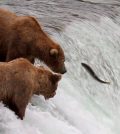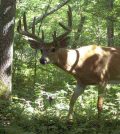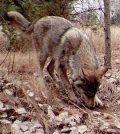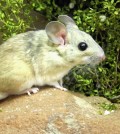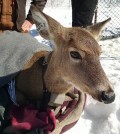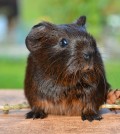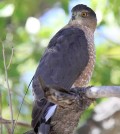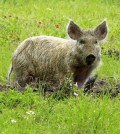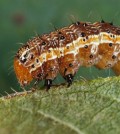Posts for tag "animals"
Bearcam Aids Study Of Human Connections With Wildlife
Kansas State University researchers are using a bearcam at Katmai National Park to study human emotional connections with wildlife.
- Posted August 11, 2016
Snapshot Wisconsin Combines Cameras, GPS, Citizen Science
The Snapshot Wisconsin project looks to document wildlife around the state with more than 4,000 GPS-tagged cameras and satellite data.
- Posted June 6, 2016
Remote Cameras Confirm Wildlife In Chernobyl Exclusion Zone
University of Georgia scientists used remote cameras to confirm the presence of wildlife in the Chernobyl Exclusion Zone.
- Posted May 4, 2016
Warming May Spell Disaster For Woodrats Eating Toxic Plants
Woodrats find it harder to process creosote plants at higher temperatures. A tipping point seems to exist above which they will find it tough to thrive.
- Posted February 9, 2016
Penn State Deer Trackers Study Animal’s Movements
Researchers at Penn State University use GPS collars as deer trackers to study deer movements and how they affect forest health.
- Posted January 29, 2016
Guinea Pigs Take On Climate Change And Win
A new study shows guinea pigs have climate change figured out, according to a New Scientist article. A team of researchers from the Leibniz Institute for Zoo and Wildlife Research observed South American guinea pigs and found...
- Posted January 12, 2016
Tracking Beavers Near Boston Could Reveal Breeding Behavior Insights
Boston University researchers use radio transmitter tags and specialized trapping techniques for tracking beavers throughout Boston’s Quabbin Reservoir.
- Posted January 4, 2016
Drones Used To Monitor Bears Cause Stress
Although monitoring bears using drones removes the disruptive presence of human researchers, it has one serious drawback: The drones stress the bears they are trying to study, according to a University of Minnesota investigation covered by Ars...
- Posted August 20, 2015
USFWS Scientists Chart Divergent Lives Of Male And Female Cooper’s Hawks
Radio tracking devices help reveal differences in the lifestyles of male and female Cooper’s Hawks.
- Posted August 11, 2015
GPS collar study helps in Louisiana invasive wild pig problem
A GPS collar tracking study shows how far damaging, invasive wild pigs range in Louisiana marshes, helping control crews with a daunting task.
- Posted April 1, 2015
Study finds fall armyworm’s secret to eating toxic plants
Maize and other plants use toxins to repel insects and worms. But by monitoring a specific chemical inside a fall armyworm, researchers at the Max Plank Institute for Chemical Ecology discovered that the worm’s gut can chemically...
- Posted October 22, 2014


